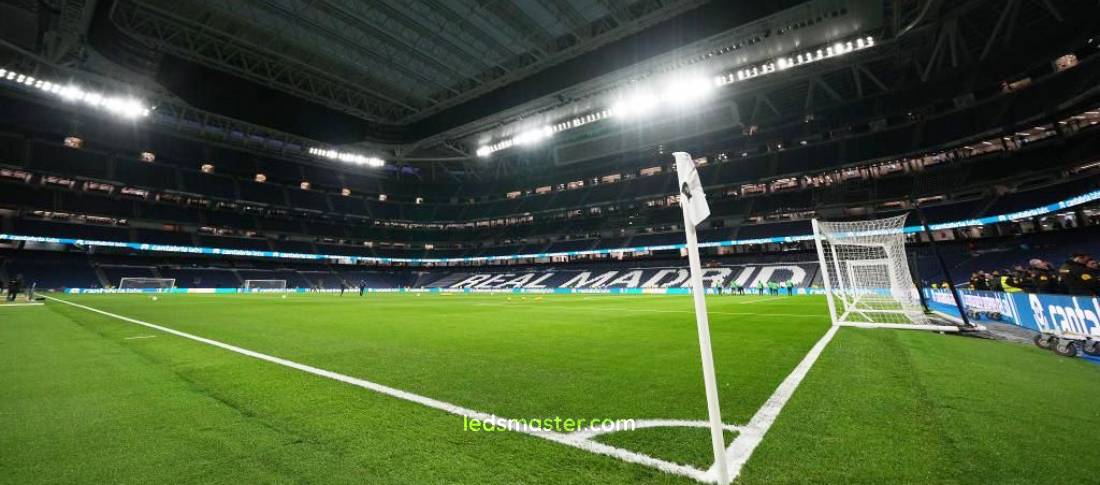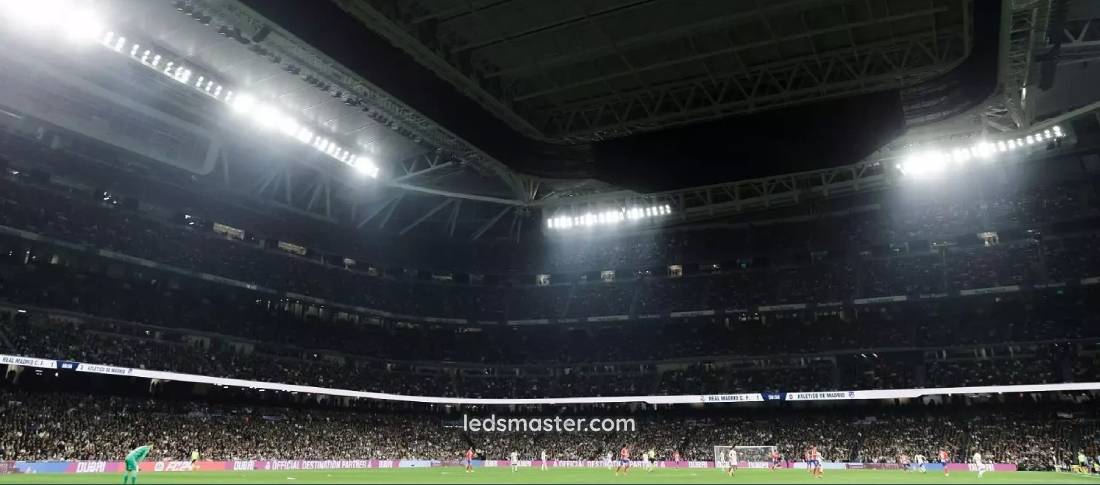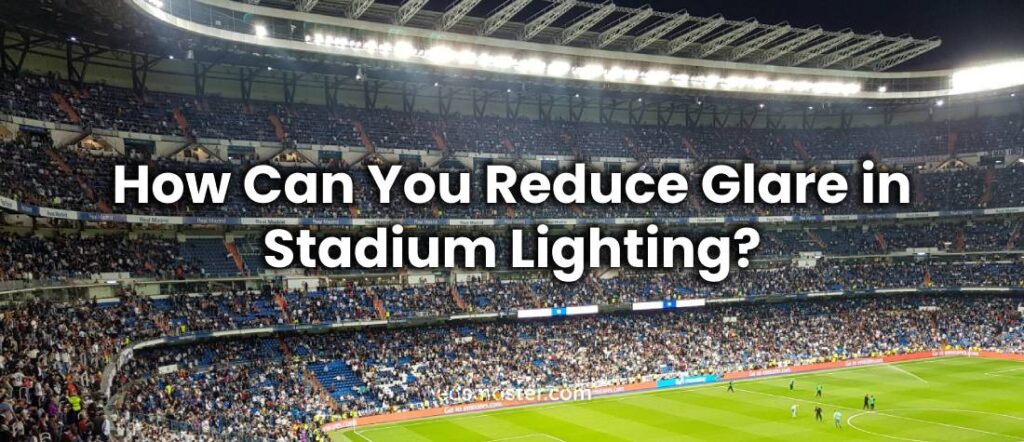In modern stadiums, ensuring optimal lighting conditions is crucial not just for enhancing the spectators’ experience but also for ensuring the safety and performance of athletes. Glare, an unintended consequence of poorly designed lighting systems, poses a significant problem in this context. It can impair visibility, hinder performance, and even create uncomfortable viewing conditions for fans. Reducing glare in stadium lighting is essential for creating a more enjoyable and functional environment. This article explores the challenges of glare in stadium lighting, considers various factors contributing to the problem, and provides recommendations for mitigating its effects, with a focus on the role of LED lighting.
Table of Contents
ToggleThe Problem of Glare in Stadium Lighting
Athletes
Glare in stadium lighting presents a significant challenge for athletes, particularly in sports that require high levels of visual precision. In sports like soccer, baseball, and basketball, where players rely on sharp vision to track fast-moving objects, excessive glare can be highly disruptive. For example, in baseball, a batter’s ability to hit a pitched ball can be severely impacted if the lights create reflections or bright spots that interfere with their sight. In soccer, players need to constantly monitor the movement of the ball and their teammates; glare can hinder their ability to judge distances and movements accurately, potentially affecting their performance and increasing the risk of misjudged tackles or passes.
In addition to affecting performance, glare can also lead to visual fatigue and discomfort. Athletes subjected to intense lighting may experience eye strain, which can reduce their overall effectiveness during a game. Over time, this visual discomfort can become a significant factor in their ability to maintain peak performance throughout the event. Ensuring that stadium lighting minimizes glare is therefore crucial for optimizing athletes’ focus and safety.

Spectators
Spectators are not immune to the effects of glare, which can significantly diminish their enjoyment and comfort while watching an event. Excessive glare can create a visually uncomfortable environment, causing viewers to squint or shield their eyes from the harsh lighting. This can detract from their ability to fully engage with the game, as they may struggle to see the action clearly or experience discomfort that forces them to look away.
The problem of glare can also impact the overall atmosphere of the event. When spectators are uncomfortable due to intense lighting, it affects their overall experience and satisfaction. In some cases, glare can lead to headaches and visual strain, further detracting from their enjoyment. Additionally, glare can reduce the effectiveness of the lighting system by impairing the clarity and contrast of the broadcast, making it harder for viewers to appreciate the details of the game.
Reasons Behind Glare Issues in Stadium Lighting
Inadequate Fixture Shielding
Inadequate shielding of light fixtures is a primary contributor to glare in stadium lighting. Fixtures that lack proper shielding can direct intense beams of light straight into the eyes of players and spectators. This direct exposure not only causes discomfort but also impairs visibility, making it challenging for athletes to maintain focus and for spectators to enjoy the event. Effective shielding is essential to direct light precisely where it is needed and to prevent it from spilling into unintended areas. Properly shielded fixtures minimize glare by controlling light emission angles and reducing stray light, which helps create a more comfortable and functional lighting environment.
Poor Light Distribution
Poor light distribution is another major factor leading to glare. When light is not evenly distributed across the stadium, it creates areas of intense brightness and sharp shadows. These inconsistencies can cause visual discomfort and make it difficult for athletes to see clearly and react accurately. Uneven lighting also detracts from the spectators’ experience, as it can lead to areas of the field or court that are either too bright or too dim. Effective light distribution involves strategically placing fixtures and adjusting their angles to ensure that light is spread uniformly across the entire playing surface, reducing the likelihood of glare and enhancing overall visibility.
High Light Intensity
Excessive light intensity is a significant issue that can lead to glare in stadium settings. While it is important to provide sufficient illumination, overly bright lights can overwhelm the eyes and create intense spots of brightness that contribute to visual discomfort. Managing light intensity is crucial to achieving a balance between adequate illumination and preventing glare. Proper calibration of light levels is necessary to avoid over-lighting, which can otherwise lead to a harsh and uncomfortable viewing experience. By carefully adjusting light intensity, it is possible to maintain effective illumination while minimizing glare.
Reflective Surfaces
Reflective surfaces within the stadium can exacerbate glare problems. Highly reflective materials, such as glossy floors or panels, can bounce light back into the eyes, intensifying glare and visual discomfort. This issue is particularly pronounced in stadiums where reflective surfaces are prevalent or where maintenance has increased their shine. Addressing the impact of reflective surfaces involves considering their interaction with the lighting design. Adjustments may be needed to account for reflections and reduce their impact on glare. Managing surface reflectivity is an important step in creating a more comfortable and visually consistent environment for both athletes and spectators.

Recommendations for Reducing Glare in Stadium Lighting
Utilize LED Lighting Technology
LED lighting technology provides several advantages in addressing glare issues in stadium environments. Modern LED fixtures are designed with advanced optics and shielding that can be tailored to control the direction and distribution of light precisely. These optics and shielding techniques help prevent direct light from reaching the eyes of athletes and spectators, thereby reducing glare. For instance, LEDs can be equipped with specially designed lenses that focus light in specific directions, minimizing unwanted light spill and glare.
Besides, LED systems offer unparalleled flexibility in adjusting both light intensity and color temperature. This adaptability allows for fine-tuning the lighting conditions to suit specific requirements and varying environmental conditions. By adjusting the intensity, it is possible to provide adequate illumination without overwhelming the eyes, while color temperature adjustments can improve contrast and visibility, further mitigating glare. The ability to customize lighting settings with LEDs ensures that the lighting can be optimized for different types of events and times of day, enhancing both performance and viewing comfort.
Implement Proper Fixture Shielding
Proper fixture shielding is crucial for effectively reducing glare. High-quality fixtures with well-designed shielding mechanisms help direct light precisely where it is needed while preventing stray light from escaping into unintended areas. This not only improves visibility but also creates a more comfortable viewing environment for both athletes and spectators.
Investing in fixtures with integrated shielding solutions, such as hoods or diffusers, helps to control the direction of light and minimize glare. These shielding elements can prevent light from shining directly into eyes, which is particularly important in large stadiums where the distance between light sources and the playing field can lead to significant glare issues. Effective shielding also contributes to the overall efficiency of the lighting system by ensuring that light is used more effectively and reducing light pollution.
Optimize Light Distribution
Uniform light distribution is essential for minimizing glare and ensuring a clear, comfortable viewing experience. Achieving this involves careful planning and strategic placement of light fixtures throughout the stadium. By positioning fixtures to cover the entire field or court evenly, the likelihood of creating bright spots and shadows is significantly reduced.
Advanced lighting control systems can also play a key role in optimizing light distribution. These systems allow for dynamic adjustments of light levels and angles, ensuring that light is evenly spread across the playing surface. This approach helps to eliminate harsh contrasts between bright and dark areas, which can contribute to visual discomfort and glare. By employing sophisticated control mechanisms and thoughtful fixture placement, stadium designers can achieve more consistent and glare-free illumination.
Address Reflective Surfaces
Reflective surfaces within the stadium can exacerbate glare issues by reflecting light back into the eyes of players and spectators. To mitigate this problem, it is important to address the reflectivity of these surfaces. One effective strategy is to use materials with lower reflectivity or apply anti-glare treatments.
For example, applying a matte finish to the playing surface can significantly reduce the amount of light that is reflected back, thereby minimizing glare. Similarly, using materials with non-reflective properties in other areas of the stadium can help to control unwanted reflections. By carefully selecting materials and treatments that reduce reflectivity, designers can help to create a more comfortable and visually pleasant environment.
Incorporate Adaptive Lighting Solutions
Adaptive lighting solutions, such as programmable LED systems, offer the flexibility to adjust lighting conditions based on various factors, including time of day and specific event requirements. These systems can be programmed to automatically adjust light levels and angles in response to changing conditions, ensuring optimal lighting and reducing glare.
Adaptive lighting allows for dynamic adjustments that can enhance visibility and comfort throughout different phases of an event. For instance, the lighting can be softened during pre-game activities and ramped up for intense play, or adjusted to suit different types of sports. This flexibility ensures that glare is minimized under various conditions, improving the overall lighting experience for everyone involved.
Conclusion
Reducing glare in stadium lighting is crucial for ensuring optimal visibility and enhancing the overall experience for both athletes and spectators. By addressing factors such as fixture design, light intensity, distribution, and reflective surfaces, it is possible to minimize glare and create a more comfortable and enjoyable environment. The use of advanced LED lighting technology offers significant advantages in controlling glare, thanks to its flexibility and precision. Implementing proper shielding, optimizing light distribution, addressing surface reflectivity, and incorporating adaptive lighting solutions are key strategies in achieving effective glare reduction. As stadiums continue to evolve, addressing glare will remain a critical component in designing lighting systems that meet the needs of modern sports and entertainment venues.

